It's probably safe to assume a major part of your marketing strategy today is digital. Consumers and businesses alike are almost always online and on-the-go — and you want to be able to reach them and observe their behavior where they spend their time.
But when you're growing a business, it may seem as though this ever-changing digital landscape can quickly become an overwhelming one. With a number of other responsibilities and tasks that need to get done, how can you also efficiently create, fine-tune, and maintain an agile digital marketing strategy?
We've put together this guide about marketing strategies to help you improve your digital presence and grow better.
What is a marketing strategy?
It's important to understand how a marketing strategy differs from a digital marketing strategy before implementing one or both at your company.
A marketing strategy is a plan for reaching a specific marketing-related goal (or goals) in a focused and achievable way. It takes into consideration what your business is currently doing well and what you're missing in regards to the objective you set, so you're more likely to accomplish it.
But what's the difference between a marketing strategy and marketing tactics — two terms often used interchangeably?
Marketing Strategy vs. Tactics
As we mentioned above, a strategy is an achievable and focused set of steps used to help you reach a specific goal.
Marketing or not, there are three parts of any strategy: 1) a diagnosis of your challenge, 2) a guiding policy for dealing with the challenge, and 3) a set of targeted actions that are necessary to accomplish the policy.
Depending on the scale of your business, your marketing strategy may include several moving parts, each with different goals. With that said, working on your strategy can become daunting at time. So, if you're ever feeling overwhelmed about your marketing strategy, refer to these three steps to keep you focused on achieving your objectives.
Marketing tactics, or tactics of any kind, are the specific actions you choose to take throughout your strategy to help you reach your end goal. In other words, a strategy is your destination — it's the achievable, focused plan for getting you to your target. Tactics are concrete and definable steps within your strategy that ensure you reach your objective.
To provide a better understanding of what they may entail, check out the following list of basic marketing strategies commonly utilized by teams across a range of industries.
Basic Marketing Strategies
- Publish a blog.
- Advertise on a specific social media platforms (e.g. Facebook Ads, Instagram Ads).
- Offer free educational resources
- Search engine optimize your digital content.
- Create a giveaway and/ or contest.
- Test different campaign types to determine what works best for your audience.
- Organize a webinar.
- Product a podcast.
- Create an email campaign.
Now that you understand what a marketing strategy is, let's look at how one differs from a digital marketing strategy.
Similar to marketing strategies and marketing tactics, another couple of similar terms that are often, incorrectly, used interchangeably are digital marketing strategy and digital marketing campaign. So how do they differ?
What is a digital marketing campaign?
As mentioned, a digital strategy is the series of actions you plan and take to achieve your overarching digital marketing goal. In contrast, digital marketing campaigns are the building blocks and actions within your strategy that move you toward a specific, digital end goal.
For instance, if the overarching goal of your digital marketing strategy is to generate more leads through social media, you might run a digital marketing campaign on Twitter. You may share some of your business's best-performing gated content on Twitter to generate more leads through the channel.
Next, let's look at the steps involved in creating a digital marketing strategy for your business.
1. Build your buyer personas.
For any marketing strategy — digital or not — you need to know who you're marketing to. The best digital marketing strategies are built upon detailed buyer personas, and your first step is to create them.
Buyer personas represent your ideal customer(s) and can be created by researching, surveying, and interviewing your business's target audience.
It's important to note that this information should be based upon real data whenever possible, as making assumptions about your audience can cause your marketing strategy to move in the wrong direction.
To get a rounded picture of your persona, your research pool should include a mixture of customers, prospects, and people outside your contacts database who align with your target audience.
But what kind of information should you gather for your own buyer persona(s) to inform your digital marketing strategy?
That depends on your businesses — it's likely to vary depending on whether you're B2B or B2C, or whether you sell a high-cost or low-cost product.
Here are some starting points that you can fine-tine and tailor to your particular business.
Quantitative and Demographic Information
- Location: Use web analytics tools to easily identify what location your website traffic is coming from.
- Age: Depending on your business, this may or may not be relevant information. But if it us, it's best to gather this data by identifying trends in your existing prospect and contact database.
- Income: It's best to gather sensitive information like personal income through persona research interviews, as people might be unwilling to share these details via online forms.
- Job Title: This is something you can get a rough idea of from your existing customer base and is most relevant for B2B companies.
Qualitative and Psychographic Information
- Goals: Depending on what challenge your product or service solves, you may already have a good idea of the goals of your buyer persona. Cement your assumptions by speaking to real customers and internal sales and customer service reps.
- Challenges: Speak to customers, sales and customer service reps, and any other customer-facing employees to get an idea of the common challenges your audience members face.
- Hobbies/ Interests: Ask customers and those who align with your target audience about their hobbies and interests. If you're a fashion brand, for example, it's helpful to know if large segments of your audience are also interested in fitness and well-being to inform future content and partnerships.
- Priorities: Talk to customers and target audience members to find out what's most important to them in relation to your business. For example, if you're a B2B software company, knowing your audience values customer support over a competitive price point is very valuable information.
By combining all of these details, you'll be able to create buyer personas that are accurate and highly-valuable for your business.
2. Identify your goals and the digital marketing tools you'll need.
Your marketing goals should always be tied back to the fundamental goals of your business.
For example, if your business's goal is to increase online revenue by 20%, your marketing team's goal might be to generate 50% more leads via the website than the previous year to contribute to that success.
Whatever your overarching digital marketing goal is, you must be able to measure the success of your strategy along the way with the right digital marketing tools.
For instance, the Reporting Dashboard in HubSpot brings all of your marketing and sales data into one place, so you can quickly determine what works and what doesn't to improve your strategy for the future.
3. Evaluate your existing digital channels and assets.
When reviewing your existing digital marketing channels and assets to determine what to incorporate in your strategy, it's helpful to first consider the big picture — this will prevent you from feeling overwhelmed or confused.
Gather what you have, and categorize each vehicle or asset in a spreadsheet, so you have a clear picture of your existing owned, earned, and paid media.
Owned, Earned, Paid Media Framework
To do this effectively, use the owned, earned, and paid media framework to categorize the digital "vehicles", assets, or channels you're already using and decide what's a good fit for your strategy.
Owned Media
This refers to the digital assets your brand or company owns — whether that's your website, social media profiles, blog content, or imagery. Owned channels are the what your business has complete control over.
This can also include some off-site content you own that isn't hosted on your website (e.g. a blog you publish on Medium).
Earned Media
Earned media refers to the exposure you earn through word-of-mouth marketing. Whether that's content you've distributed on other websites (e.g. guest posts), PR work you've been doing, or the customer experience you've delivered. Earned media is the recognition you receive as a result of these efforts.
You can earn media by getting press mentions and positive reviews as well as by people sharing your content via their networks (e.g. social media channels).
Paid Media
Paid media refers to any vehicle or channel you spend money on to catch the attention of your buyer personas.
This includes things like Google AdWords, paid social media posts, native advertising (e.g. sponsored posts on other websites), or any other medium through which you pay in exchange for increased visibility.
Since you have a better grasp on what this framework entails, let's look at an example.
Say you have an owned piece of content on a landing page on your website that's been created to help you generate leads. You know you want to incorporate different parts of the framework rather than just working with owned, earned, or paid media alone.
To amplify the number of leads the content generates, you make an effort to ensure it's shareable so your audience can distribute it via their social media profiles. In return, this will increase traffic to your landing page. This is the earned media component.
To support your content's success, you might post about the content on your Facebook page and pay to have it seen by more people in your target audience.
This is how the three parts of the framework are able to work together — although, it's not necessary for success. For instance, if your owned and earned media are already both successful, you might not need to invest in paid. So, evaluate the best solution to help you meet your goal, and then incorporate the channels that work best for your business into your digital marketing strategy.
Now you know what's already being used, you can start to think about what to keep and what to cut.
4. Audit and plan your owned media campaigns.
At the heart of digital marketing is owned media — and it almost always takes comes in the form of content. That's because nearly every message your brand broadcasts can be classified as content, whether it's an About Us site page, product descriptions, blog posts, ebooks, infographics, podcasts, or social media posts.
Content helps convert your website visitors into leads and customers while improving your brand's online presence. And when this content is search engine optimized (SEO), it can boost your search and organic traffic.
Whatever your digital marketing strategy goal is, you'll want to incorporate owned content. To start, decide what content will help you reach your goals.
If your goal is to generate 50% more leads via the website than last year, your About Us page is most likely not going to be included in your strategy, unless that page has somehow been a lead-generation machine in the past.
Here's a brief process you can follow to work out what owned content you need to meet your digital marketing strategy goals.
Audit your existing content.
Make a list of your existing owned content, and rank each item according to what has previously performed best in relation to your current goals.
For example, if your goal is lead generation, rank your content according to which pieces generated the most leads over the last year (such as a blog post, ebook, or site page).
The idea here is to figure out what's currently working, and what's not, so that you can set yourself up for success when planning future content.
Identify gaps in your existing content.
Based on your buyer personas, identify any gaps in the content you have. For example, if you're a math tutoring company and know through research that a major challenge for your personas is finding effective ways to study — you don't currently have content that speaks to that concern — create some.
By looking at your content audit, you might discover that ebooks hosted on a certain type of landing page convert really well (better than webinars, for example). In the case of this math tutoring company, you might make the decision to add an ebook about "how to make studying more effective" to your content creation plans.
Create a content creation plan.
Based on your findings and the gaps you've identified, make a content creation plan outlining the content that's necessary to help you hit your goals.
This should include:
- Title
- Format
- Goal
- Promotional channels
- Why you're creating the content
- Priority level of the content
This can be a simple spreadsheet, and should also include budget information if you're planning to outsource the content creation, or a time estimate if you're producing it yourself.
5. Audit and plan your earned media campaigns.
Evaluating your previous earned media against your current goals can help you get an idea of where to focus your time. Look at where your traffic and leads are coming from (if that's your goal) and rank each earned media source from most effective to least effective.
You can obtain this information using tools like the Sources reports in HubSpot's Traffic Analytics tool.
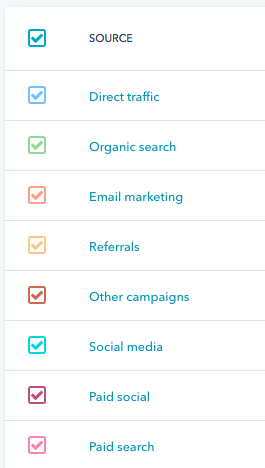
You may find a particular article you contributed to the industry press drove a lot of qualified traffic to your website, which boosted conversions. Or, you may discover LinkedIn is where you see most people sharing content, which increased traffic.
The idea is to build a picture of what types of earned media will help you reach your goals (and what won't) based on historical data. However, if there's something new you want to experiment with, don't rule it out just because it's never been done before.
6. Audit and plan your paid media campaigns.
This process involves much of the same process: You need to evaluate your existing paid media across each platform (e.g. Google AdWords, Facebook, Twitter, etc.) to figure out what's most likely to help you meet your current goals.
If you've spent a lot of money on AdWords and haven't seen the results you'd hoped for, maybe it's time to refine your approach, or scrap it altogether and focus on another platform that seems to be yielding better results.
Use this free guide for more on how to leverage AdWords for your digital marketing strategy.
By the end of the process, you should have a clear idea of which paid media platforms you want to continue using, and which (if any) you'd like to remove from your strategy.
7. Bring your digital marketing campaign together.
You've done the planning and the research, and you now have a solid vision of the elements that will make up your digital marketing strategy.
To review, here's what you should have solidified so far:
- Clear profile(s) of your buyer persona(s)
- One or more digital marketing-specific goals
- An inventory of your existing owned, earned, and paid media
- An audit of your existing owned, earned, and paid media
- An owned content creation plan or wish list
Now, it's time to bring all of it together to form a cohesive strategy document. Let's revisit what digital strategy means: the series of actions that are going to help you achieve your goal(s) through online (digital) marketing.
Meaning, your strategy document should map out the series of actions you're going to take to achieve your goals, based on your research up to this point.
(Pro tip: A spreadsheet is an efficient format for this — and for the sake of consistency, you might find it easiest to map out according to the owned, earned, and paid media framework we've used so far.)
You'll also need to plan your strategy for the long term — typically, around 6-12 months is a good starting point, depending on your business. This will allow you to overlay when you and your team will be executing each action. For example:
- In January, you'll start a blog which will be continually updated once a week, for the entire year.
- In March, you'll launch a new ebook, accompanied by paid promotion.
- In July, you'll prepare for your biggest business month — what do you hope to have observed at this point that will influence the content you produce to support it?
- In September, you'll focus on earned media in the form of PR to drive additional traffic during the run-up.
By taking this approach, you'll create a structured timeline for your activity, which will help communicate plans among colleagues.
Lastly, here a some well-known examples of digital marketing campaigns, and the strategies they employ, to get you inspired .
1. GoPro: Earned Media User-Made Video
GoPro is famous for its unique point-of-view style footage, all taken from the company's classic fisheye lens.
What you might not know is that so much of the video content you see on GoPro's YouTube channel wasn't made by GoPro — rather, it's created their loyal users.
By populating their YouTube channel with user-made video content, GoPro has encouraged their fanbase to capture their footage and adventures, and then post it online (crediting the GoPro product for their footage and experience).
This ongoing digital marketing campaign has championed the use of video to spread the word about GoPro's product line as well as created a community of loyal customers and fans.
2. Delta Air Lines: Owned Media Twitter Stories
Delta Air Lines is a prolific user of social media, specifically on Twitter. The brand uses the platform to engage potential passengers in a variety of ways that are both timely and emotionally stimulating.
For example, in honor of Breast Cancer Awareness Month, the company shared personal stories from Delta employees with audience members via the company's Twitter feed.
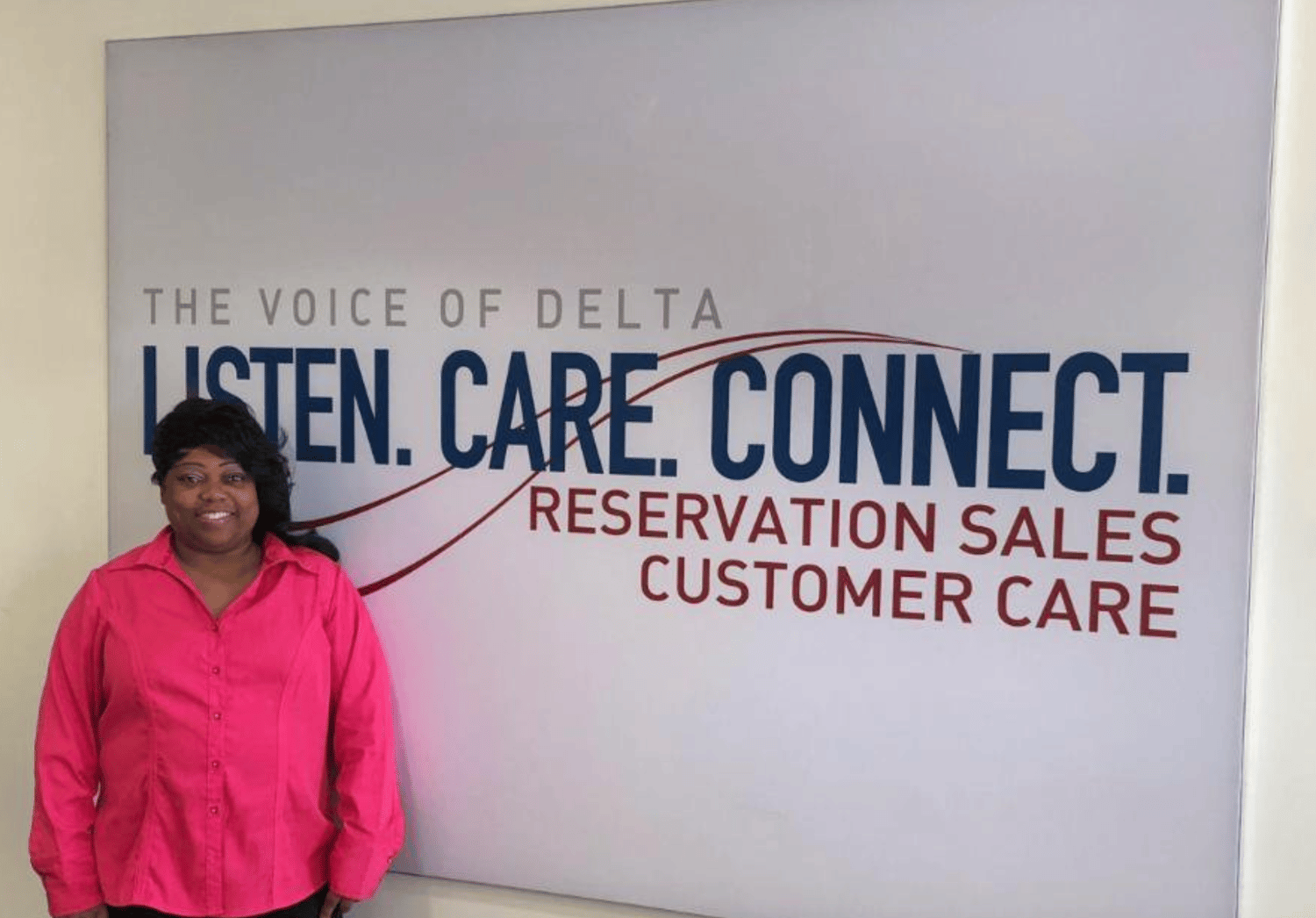
This type of digital campaign promotes loyalty, positive brand awareness, and gives prospective and current customers an idea of what Delta cares about and stands for.
3. Geico: Paid Media YouTube Preroll Ads
For many, when you hear the word "Geico," you automatically remember you can "save 15% or more on car insurance."
But even a company with such a memorable and successful tagline can risk annoying audience members (repetitive things can become old, quickly) when a marketing campaign becomes too longwinded.
That's why Geico launched a series of preroll ads on YouTube that admit to the ad's brevity. Preroll ads are a form of paid content on YouTube in which you pay YouTube to roll 15-to-20-second ads ahead of videos that have the same audience as the advertiser.
While some companies try to squeeze as much messaging as they can into that short slot, Geico has taken the opportunity to make fun of their brand for taking up your time in the first place.
This makes Geico's YouTube preroll commercials entertaining and unique, and shows the level of self-awareness the brand has.
4. Wayfair: Owned Media Instagram Tags
Wayfair, a home furnishings and decor merchant, has an innovative Instagram strategy — their Instagram photos aren't just photos. That's because Instagram provides companies with the ability to create purchase pages from within the platform.
With Instagram Shopping, Wayfair has posted home interior shots on Instagram and tagged the products in the photos with information and pricing details.
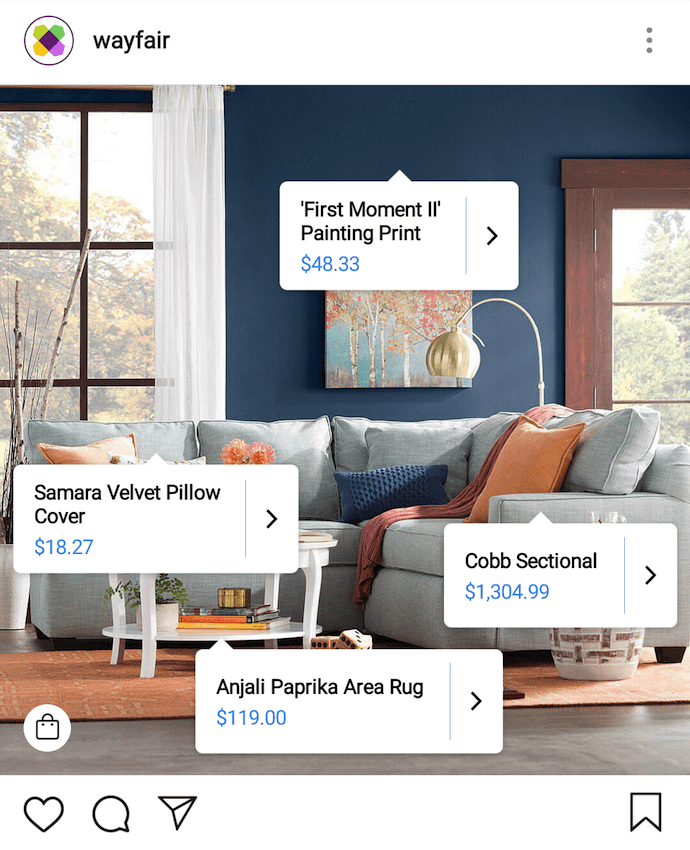
This is a digital marketing campaign that shows people exactly how much each item in the photos cost. It also directs audience members to purchase the items seen in the photos without ever leaving the app. In return, Wayfair can boost conversions and revenue from within Instagram.
5. Mastercard: Owned Media Travel Blog
Mastercard bases its brand on the stories and adventures that cardholders experience. But what good is a travel-based brand without a travel-based digital marketing campaign to go with it?
Priceless Cities, Mastercard's travel blog, is a resource that customers pair with the credit cards that help them pay for their trips.
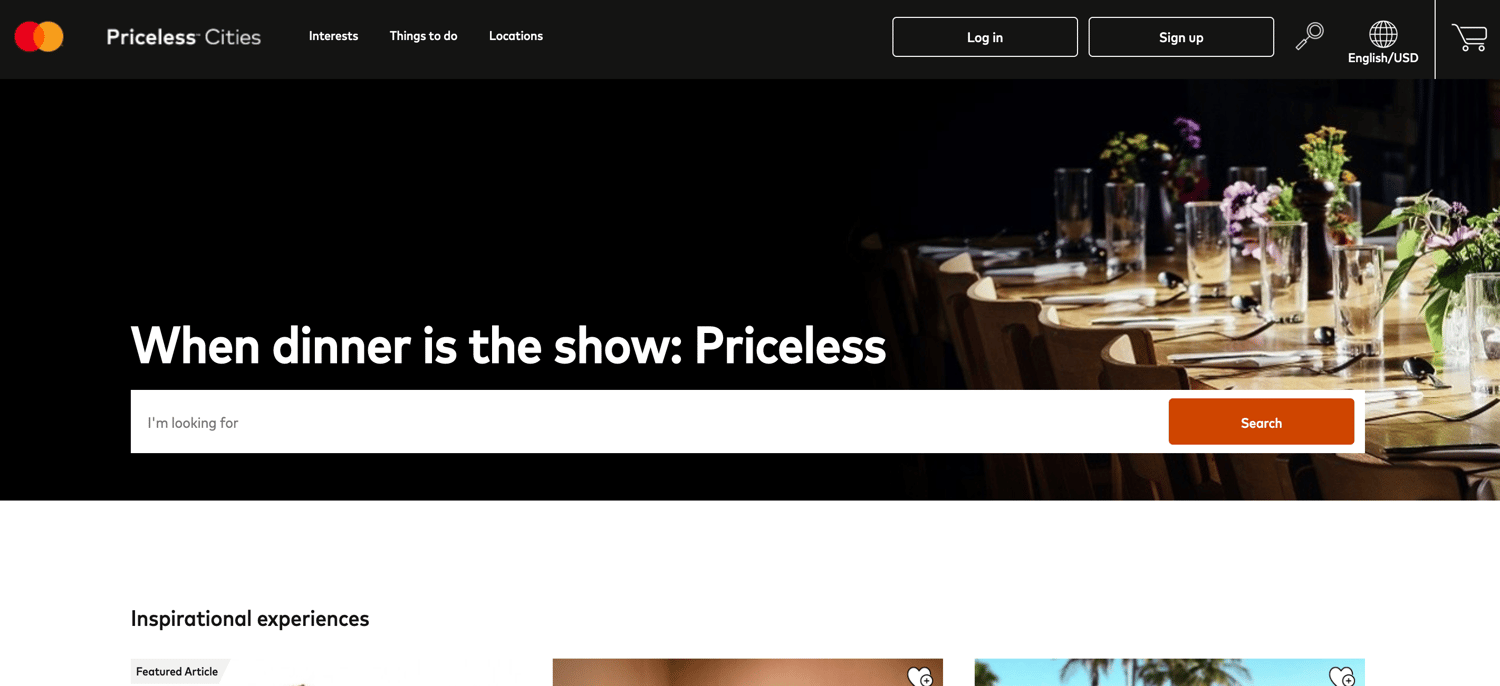
This campaign allows the company to better align with the things their customers invest in as well as the places their customers travel to.
6. ETF Securities: Paid Media LinkedIn Sponsored Content
ETF Securities is a small, asset management service that caters to wealth managers and investors in Europe.
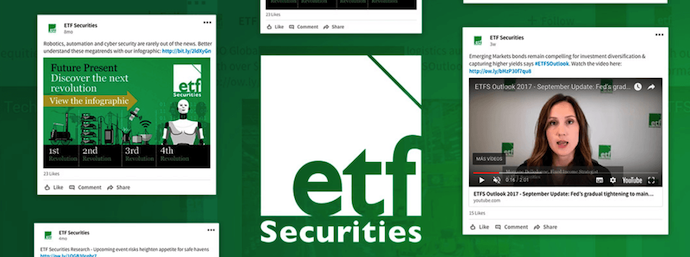
The company learned their customers spend the most time on LinkedIn, interacting with sponsored, paid content on the platform.
By investing their time here, ETF Securities has driven more interest in investments and has been able to help their customers make smarter financial decisions. With this digital campaign, ETF Securities saw 95% year-over-year growth in LinkedIn followers.
7. Red Bull: Owned Media Lifestyle News
Red Bull has become well-known for the sponsorship of extreme sports, not just the energy drink they sell.

Instead of creating digital content related to the energy drink, Red Bull captures its audience with articles and videos about the latest happenings in the extreme sports community.
In one of their digital marketing campaigns, Red Bull proved what you sell isn't always the focus ideal for a content strategy. Rather, it can be significantly more valuable to tailor a campaign to the lifestyle your customers live, or want to be associated with.
Grow Better With Marketing Strategies That Improve Your Digital Presence
Your strategy document will be very individual to your business, which is why it's almost impossible for us to create a one-size-fits-all digital marketing strategy template.
Remember, the purpose of your strategy document is to map out the actions you're going to take to achieve your goal over a period of time — as long as it communicates that, then you've nailed the basics of creating a digital strategy.
If you're eager to build a truly effective strategy to help grow your business, check out our free collection of content marketing templates below.
Editor's note: This post was originally published in October 2019 and has been updated for comprehensiveness.
No comments:
Post a Comment